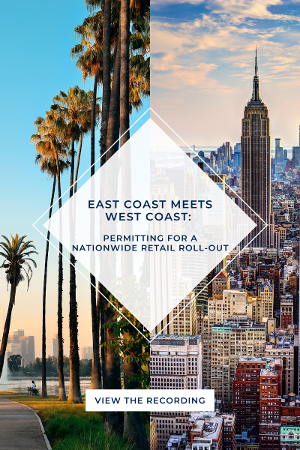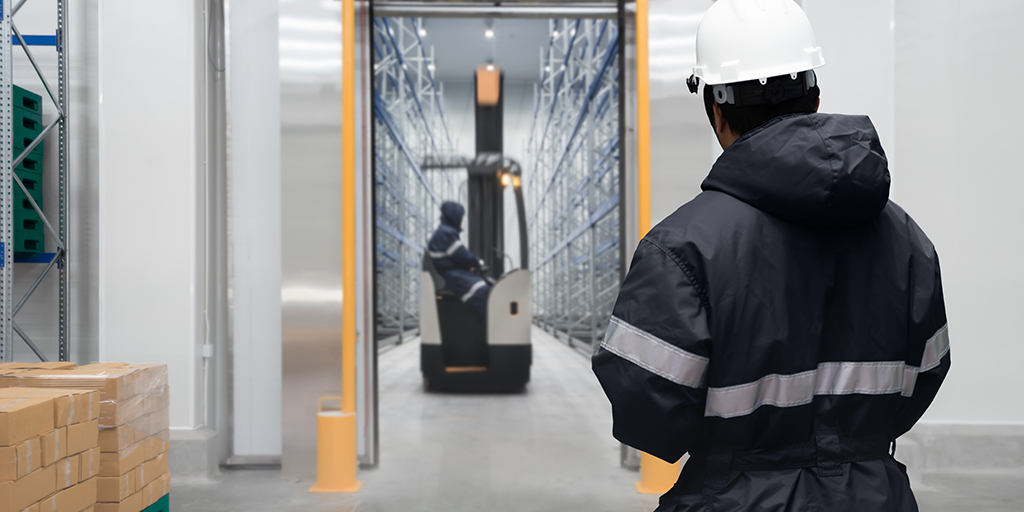The COVID-19 pandemic has impacted real estate in a number of potentially lasting ways — from workplace design to multifamily housing.
As 2021 gets underway amid a national vaccine rollout, COVID-19 is still shaping real estate trends — most notably by driving up demand for cold storage.
COVID-19 vaccines must be stored in specific, freezing temperatures, which means many building owners and developers may be investigating what permits, code, and zoning considerations are involved with creating/renovating such spaces.
However, the cold storage trend is much more broad than health care demand. Let's take a closer look at the trend and what challenges and zoning considerations exist for those considering such projects.
Online grocery shopping driving demand
 While the pandemic has accelerated demand for cold storage, the trend was well-established before 2020. This is largely due to the growth of the grocery subscription industry driving the demand for warehouses that can store food bought online.
While the pandemic has accelerated demand for cold storage, the trend was well-established before 2020. This is largely due to the growth of the grocery subscription industry driving the demand for warehouses that can store food bought online.
Consumer shopping behaviors have evolved significantly, with more buyers foregoing the usual grocery store trip, instead ordering their pantry staples online. In a 2019 report, CBRE estimated that approximately 4.5 million square feet of new cold storage construction had been recently completed or was still underway nationally. This activity was in part driven by the 24% increase in food sales that was observed over the previous five years, at the time.
As the COVID-19 pandemic took hold in 2020, however, market conditions and consumer preferences fueled further growth in cold storage demand. In a separate report, CBRE cited statistics that showed the U.S. grocery industry experienced a 100% increase in daily online sales between March 13 and 15, compared with the baseline period of March 1 to 11.
No longer willing or motivated to shop in-store, more consumers preferred to have their groceries delivered directly to them, or they opted for curbside pickup. In all, CBRE predicted the growth would lead to an additional 75 million to 100 million square feet of cold storage space being needed to satisfy demand.
Vaccine storage adds to demand surge
The shift to online grocery buying was just one impact of the pandemic on cold storage demand. The other, perhaps more notable driver, is the fact COVID-19 vaccines must be stored in specific, frigid temperatures, or else they will spoil.
storage demand. The other, perhaps more notable driver, is the fact COVID-19 vaccines must be stored in specific, frigid temperatures, or else they will spoil.
According to CNBC, the Pfizer-BioNTech vaccine requires a temperature of minus 94 degrees Fahrenheit. Moderna's vaccine can be stored for up to six months at minus 4 degrees Fahrenheit. The demand crunch is such that one ultra-cold freezer company told CNBC it was entirely out of inventory when the Pfizer vaccine was approved in the U.S. SupplyChainDrive reported that an index tracking sourcing for ultra-cold freezers was up 522% year over year in Q4 2020, and was showing a 464% increase from Q3 numbers.
Challenges exist for cold storage construction
As developers, building owners, and cold storage companies rush to meet the skyrocketing demand, they will need to navigate a number of challenges that exist in bringing such spaces online or pursuing renovations.
In its 2019 report, CBRE summarized the hurdles that these projects may potentially face:
- Higher construction costs: While costs will always vary given different factors (e.g., geographic market, labor costs, project specification), the cost per square foot to construct a refrigerated warehouse is often two to three times the cost of building a dry warehouse.
- Longer timelines: Construction of a cold storage warehouse can take as many as five additional months to complete, compared to the timeline for a dry warehouse.
- Higher ceilings needed: The standard ceiling height of a cold storage facility is pegged at between 40 and 60 feet, whereas a dry warehouse is typically 34 to 36 feet. This could cause particular challenges for renovations. For example, with brick-and-mortar retail reeling from the pandemic, a number of big-box stores have closed. These locations make for ideal conversions (like last-mile facilities or ghost kitchens) and are often located in areas close to population centers and logistics, which are beneficial for the mass rollout of vaccines. However, ceiling height requirements may complicate some projects.
- Additional physical demands: Keeping a large space at ultra-low temperatures isn't done easily. Cold storage warehouses need industrial refrigeration systems, fire protection, under-floor heating, and enhanced dock leveler systems to control temperatures. Packing rooms, blast freezing, and fumigation specs are also added on top of all that.
Code compliance also plays a major role in the construction and operation of these spaces. CBRE noted that property managers must comply with standards from the EPA, OSHA, USDA, and FDA (if storing pharmaceutical products, such as vaccines).
Milrose can help guide your cold storage project to completion
As cold storage demand continues to grow, more developers and owners may be looking at new projects throughout the United States. This may especially be the case in California, which is by far the top destination for cold storage. JLL measured the state at around 400 million cubic feet of inventory in 2019. Los Angeles, in particular, is a hot market, with CBRE reporting a 4% vacancy rate for cold storage facilities in January 2020. As 2021 kicks into gear, Avison Young anticipates Southern California's industrial market to continue growing with a high number of building conversions. Other leading states with a high share of national inventory included Washington (271 million cubic feet), Florida (259 million cubic feet) and Texas (231 million cubic feet).
Given the range of zoning, code, and permitting complexities involved in building cold storage facilities, working with an experienced firm like Milrose is critical to ensuring your project is properly planned and executed to achieve efficiency and ROI. As more cold storage facilities will need to be constructed across the country to meet the growing demand for food delivery and vaccine roll out, turn to Milrose to leverage our experience working on these types of projects in municipalities throughout the United States.








